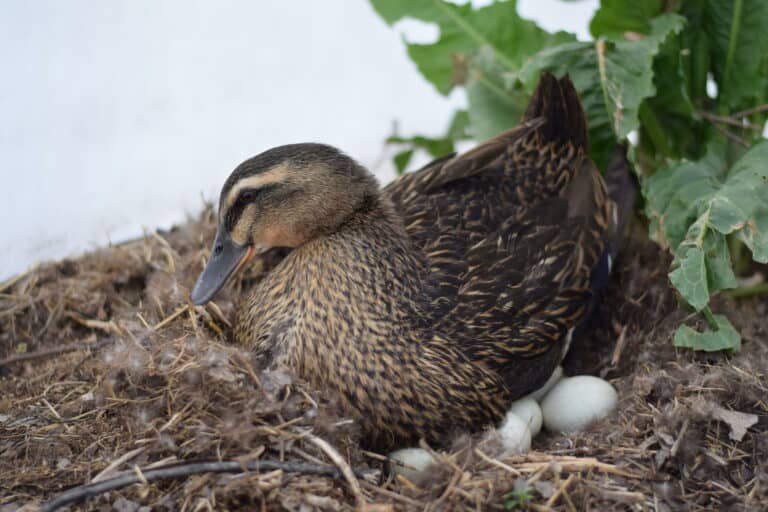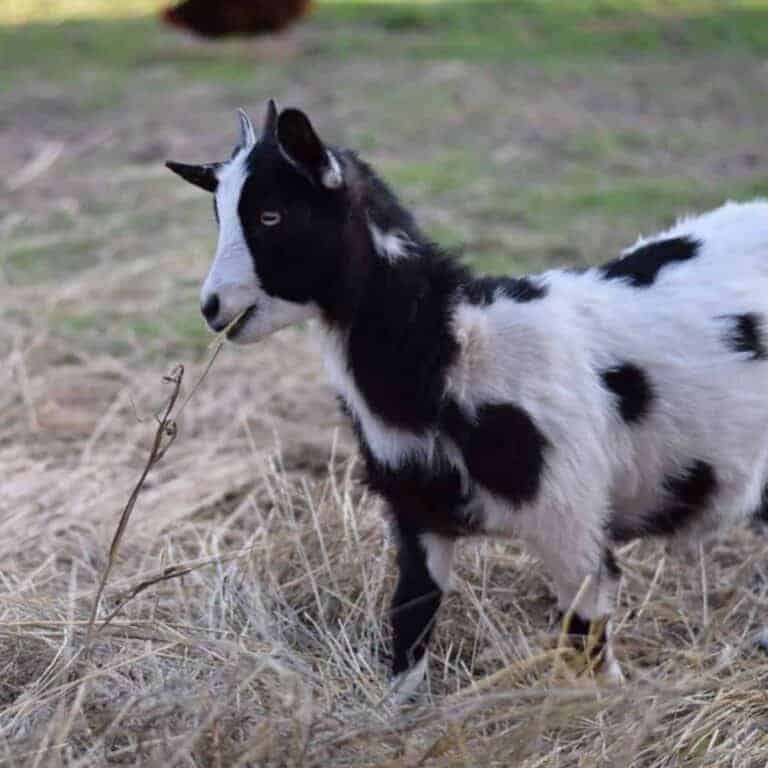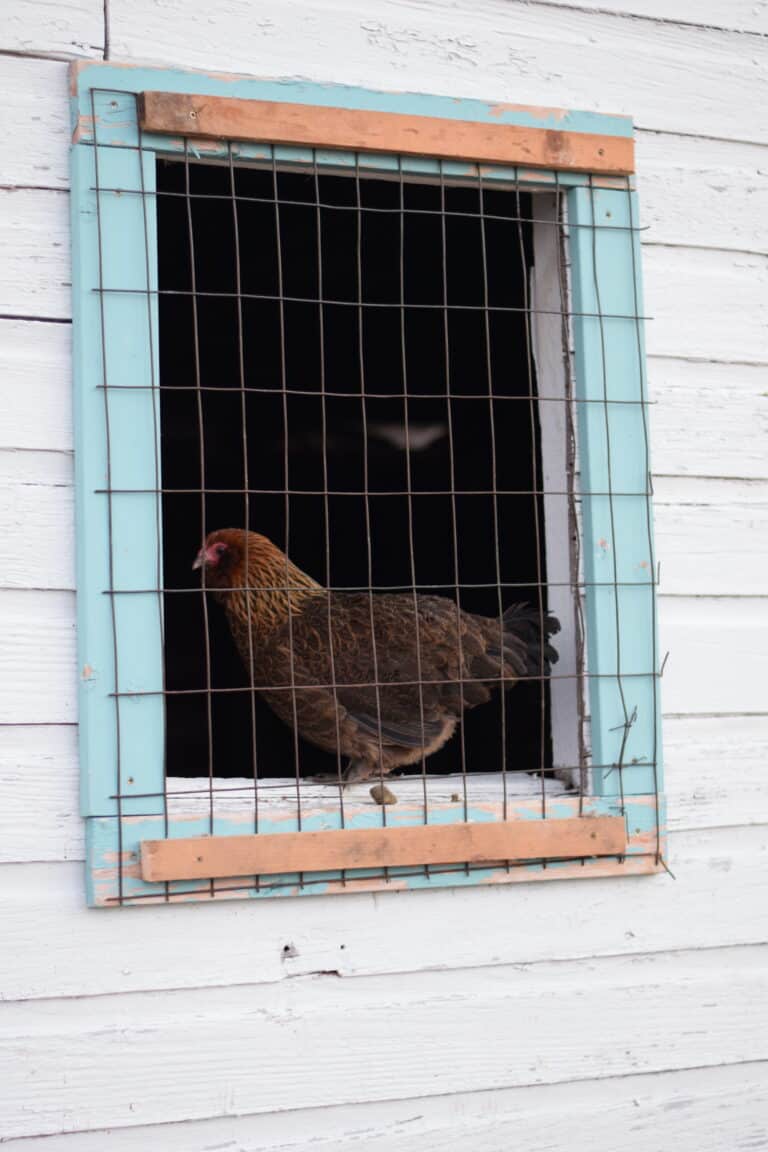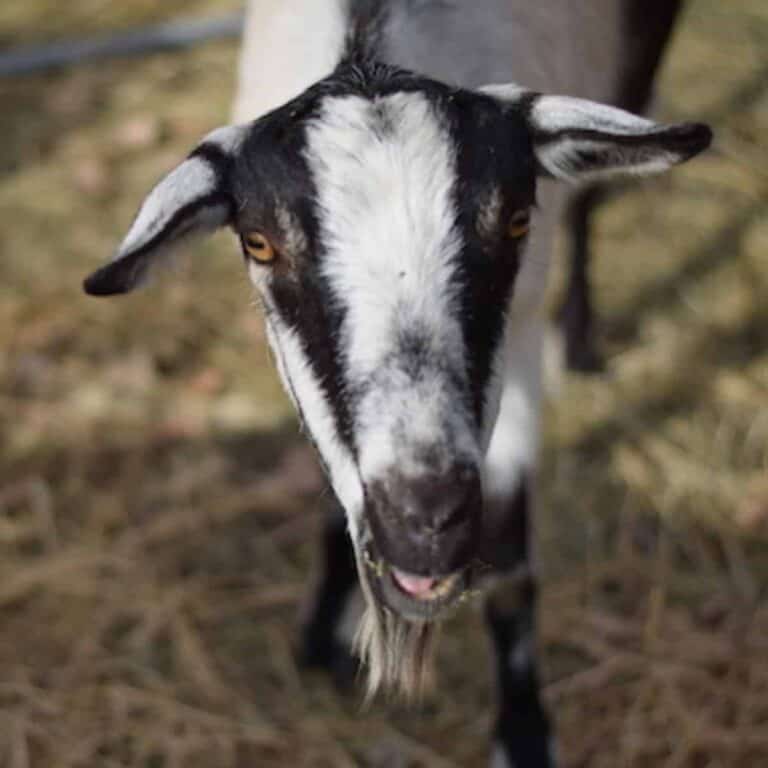How to Raise Ducks in Your Backyard (Beginner’s Guide)
Raising ducks can be a rewarding experience, whether for eggs, meat, or as pets. In this post, we are sharing a guide to help you get started.
We’ve raised ducks at our little homestead on and off over the years depending on our life circumstances. We have even hatched duck eggs a few times at our previous home and now at the new home, we’ve added a few more to flock.
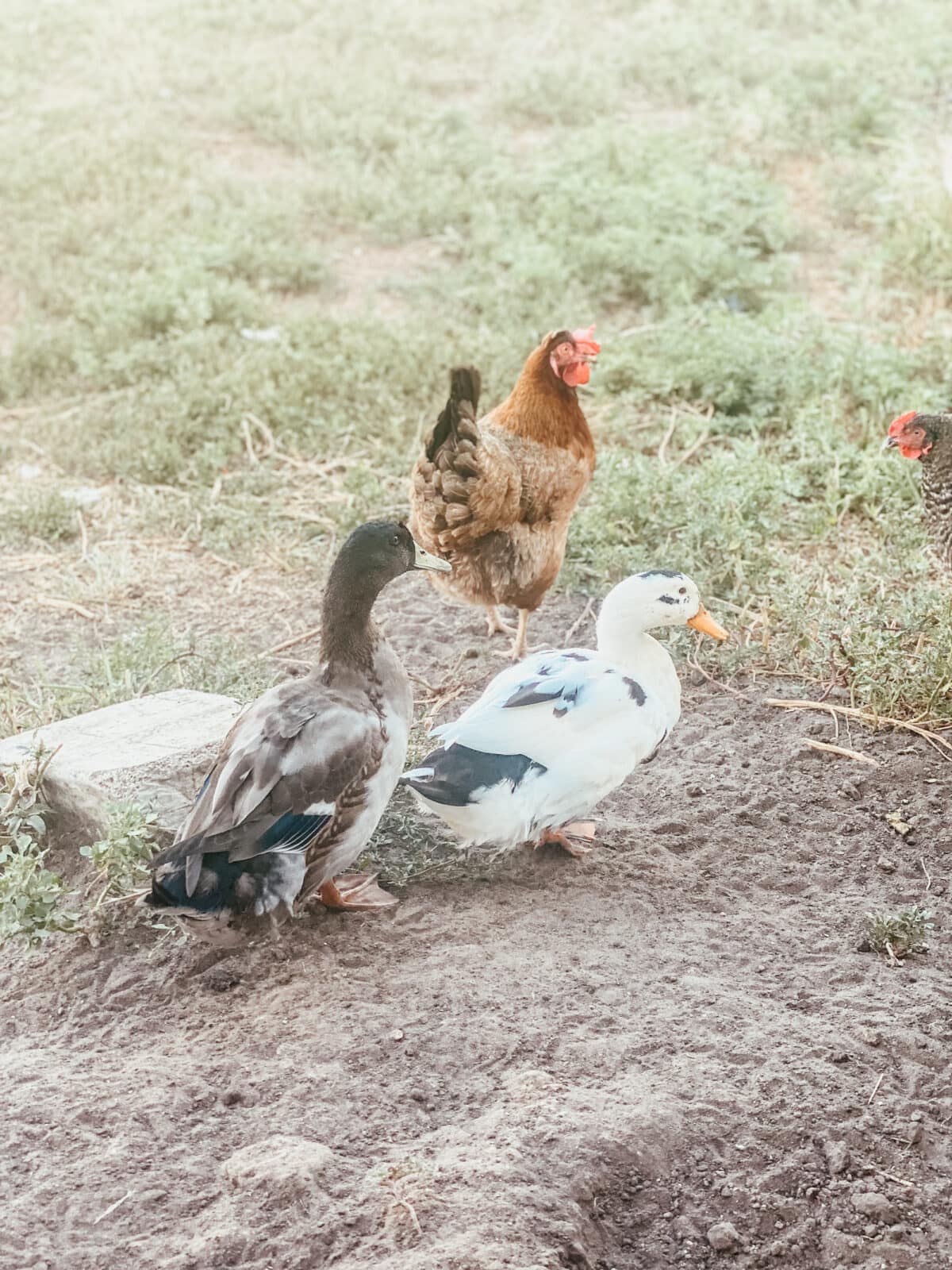
Beginner’s Guide to Raising Ducks in the Backyard
Raising ducks on the homestead is truly a joy and fun learning experience for the children (and mom, too!)
And you may be thinking, when you’re brand new to the experience, where do you get started?
In this guide, I’m sharing what we’ve learned along the way with raising ducks on our small family farm.
We are covering the best breeds for beginners, housing needs, what to feed ducks, how to care for them in the summer and winter months, and so much more.
So, let’s dive in, shall we?

What are the Best Backyard Duck Breeds for Beginners?
If you’re new to raising ducks, certain breeds are more beginner-friendly due to their temperament, egg production, hardiness, and ease of care. Here are some of the best backyard duck breeds for beginners and their key characteristics.
Pekin Duck
Known for their meat production. They’re quiet compared to other breeds and easy to handle. Pekins are calm, easy to manage, and well-suited for backyard environments.
- Temperament: Friendly, calm, and good-natured. They are docile and make great pets.
- Egg Production: Moderate layers, producing around 150-200 eggs per year.
- Size: Large and sturdy, weighing 8-11 lbs.
- Hardiness: Hardy in various climates, though they may need extra care in extreme cold.
- Appearance: Pure white feathers with an orange bill and feet.
Khaki Campbell
Excellent foragers, making them great for pest control in the garden. Khaki Campbells are highly productive layers and easy to care for, especially if you want eggs.
- Temperament: Active and energetic but friendly. They’re not as social as other breeds but are great egg layers.
- Egg Production: One of the top egg-laying breeds, producing 250-340 eggs per year.
- Size: Medium-sized, around 4-5 lbs.
- Hardiness: Very hardy and adaptable to various climates.
- Appearance: Tan to light brown feathers with dark brown or khaki coloring.

Indian Runner
Known for their upright posture and ability to forage well. Runners are great for egg production and pest control, plus their unique appearance is a conversation starter.
- Temperament: Very active, alert, and skittish but fun to watch. They are not lap ducks but are friendly.
- Egg Production: Prolific egg layers, with 200-300 eggs per year.
- Size: Light and upright, around 3-5 lbs.
- Hardiness: Hardy in most climates, but they prefer warmer weather.
- Appearance: They stand tall like penguins and come in a variety of colors, including white, fawn, and black.
Welsh Harlequin
Great foragers, and the females are known to be good broodies (if you want to hatch ducklings). Their friendly personality and excellent egg-laying ability make them ideal for first-time duck keepers.
- Temperament: Calm, friendly, and easy to tame. They’re one of the most sociable and gentle duck breeds.
- Egg Production: Excellent layers, producing 200-300 eggs per year.
- Size: Medium, around 5-6 lbs.
- Hardiness: Adaptable to various climates but may need extra care in extremely cold conditions.
- Appearance: Beautiful, with a mix of white, gray, and brown feathers, with iridescent green heads on drakes.
Cayuga
Known for their striking black feathers with a green iridescent sheen and quiet nature. They lay eggs with dark shells that range from gray to nearly black. Cayugas are hardy, beautiful, and quiet, making them a great choice for backyard enthusiasts.
- Temperament: Quiet, calm, and easygoing. They are very friendly and can become attached to their owners.
- Egg Production: Good layers, producing 100-150 eggs per year.
- Size: Medium to large, around 6-7 lbs.
- Hardiness: Extremely hardy, especially in cold climates.
- Other Qualities:
- Appearance: Shiny black feathers with green or blue iridescence.
Swedish Blue
They are dual-purpose, good for both meat and eggs, and have a striking blue-gray appearance with white bibs. Swedish Blues are friendly, easy to care for, and do well in various environments, especially cooler climates.
- Temperament: Calm, friendly, and quiet. They’re good pets and relatively easy to manage.
- Egg Production: Moderate layers, producing around 130-180 eggs per year.
- Size: Medium, around 5-6 lbs.
- Hardiness: Hardy and adaptable to cold weather, making them a good choice for cooler climates.
- Appearance: Bluish-gray feathers with white bibs on the chest.
Buff Orpington
Buff Orpingtons are dual-purpose, suitable for both meat and egg production. Their calm temperament and good egg production make them perfect for backyard flocks.
- Temperament: Very calm and friendly. They are docile and easy to handle, making them great for families with children.
- Egg Production: Good layers, producing around 150-220 eggs per year.
- Size: Medium to large, weighing around 5-7 lbs.
- Hardiness: Hardy and adaptable to both cold and warm climates.
- Appearance: Light buff-colored feathers with a golden sheen.
Best Overall Breeds for Beginners:
- Pekin and Khaki Campbell are ideal for beginners due to their ease of care, egg production, and hardiness.
- Indian Runner is excellent if you want prolific egg-laying and unique visual appeal.
- Welsh Harlequin is great for beginners seeking a friendly and beautiful duck that excels in egg production.
A couple of more considerations: Breeds like Khaki Campbell and Indian Runner are excellent layers, while Pekin and Muscovy ducks are popular for meat. Call Ducks and Rouen Ducks are often chosen for their appearance and friendly nature.
All these breeds are easy to manage, adaptable to various backyard environments, and offer a good balance of temperament, egg production, and beauty.
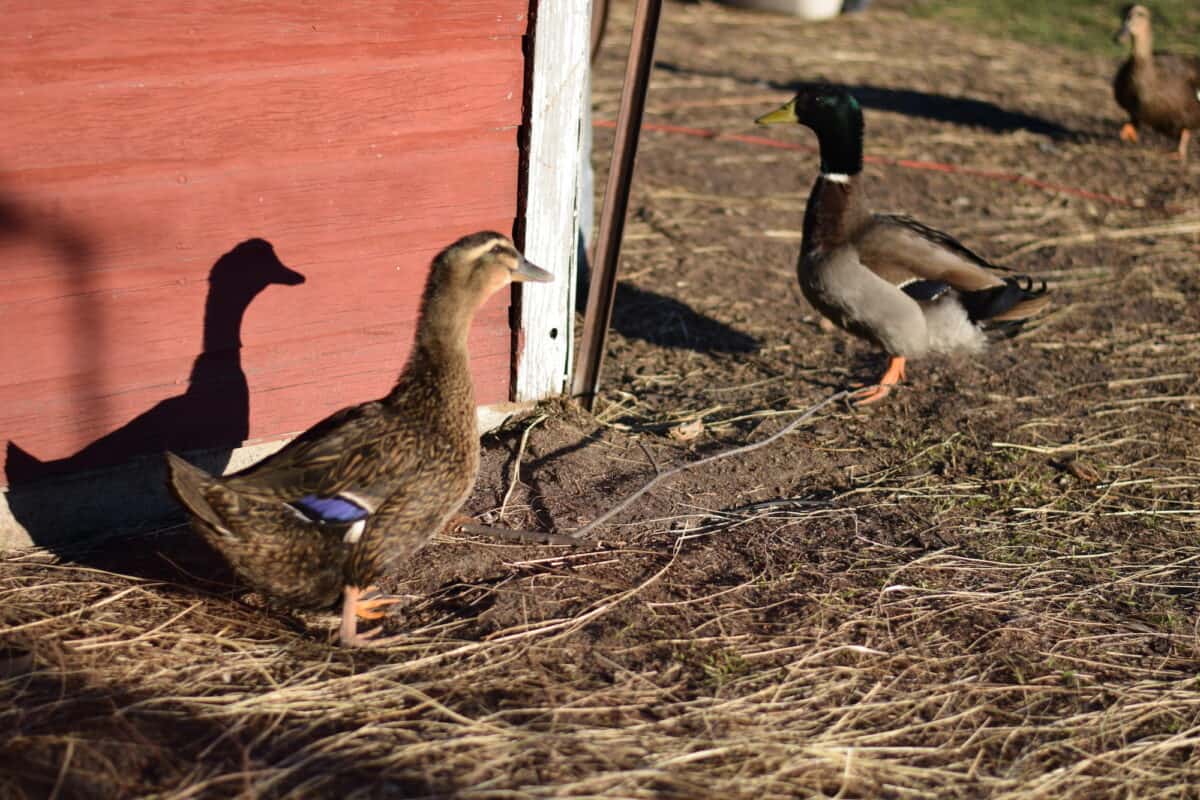
Duck Housing
Ducks need a secure, predator-proof coop or shelter. It doesn’t need to be as elaborate as a chicken coop, but it should provide protection from the elements and predators.
Ensure that the duck house has good ventilation.
Initially we had separate chicken coop and duck house, but have simplified and keep them together. This works well as long as it’s set up properly and kept clean. Ducks are really messy, so regular cleanup is needed!
♡ We love this automatic chicken door for the coop which makes our lives a bit easier! Use Code: BHH5 for an additional 5% OFF of your order.
Space Requirements: Allow at least 4-6 square feet per duck inside the coop and 10-15 square feet per duck in the outdoor run.
Bedding: Use straw, wood shavings, or hay as bedding material. Change it regularly to keep the coop clean and dry.
Nest Boxes: Provide nest boxes with straw or soft bedding inside the coop for laying. Ducks often prefer to lay in the early morning. Collect eggs daily to prevent them from becoming dirty or damaged.
Predators: Common predators include raccoons, foxes, and hawks. Ensure your ducks are locked up securely at night and that their run is predator-proof.

Water and Feeding Needs
Ducks need access to clean water at all times. They don’t need a pond, but they do enjoy swimming. A kiddie pool or shallow tub works well. Make sure they can easily enter and exit the water.
We purchase those small kiddie pools for the ducks to swim in and clean it out daily, then simply replace it every now and then as needed.
Ducks are incredibly messy so making sure things are kept tidy is necessary! And they will usually swim and splash in the kiddie pool to where it should be changed out at lease twice a day in the summer months.
It really isn’t complicated, but does take some extra work.
What to Feed Ducks
Feed ducks a balanced diet that matches their age and purpose. Ducklings need starter feed with 20% protein. Adult ducks can be fed a grower or layer feed depending on whether they are for egg production.
Supplement: Provide grit if they are not free-ranging and oyster shells if they are laying eggs, to ensure they get enough calcium.
Duck Health & Care
Clean Water: Ducks can be messy with their water, so change it frequently to avoid muddy conditions and reduce the risk of disease.
Want to save this?
Regular Check-ups: Monitor ducks for signs of illness like lethargy, abnormal droppings, or changes in appetite. Quarantine new ducks before introducing them to your flock to prevent the spread of disease.
Parasites: Regularly inspect your ducks for parasites and treat them as needed with appropriate medications or natural remedies. Some common remedies include: garlic, pumpkin seeds, kelp and apple cider vinegar.
Vaccinations: While not always necessary, consult a vet about the need for vaccinations depending on your location and the breed of duck. This is a personal choice and we’ve never done this. But just throwing it out there for you to make the decision based on your needs.
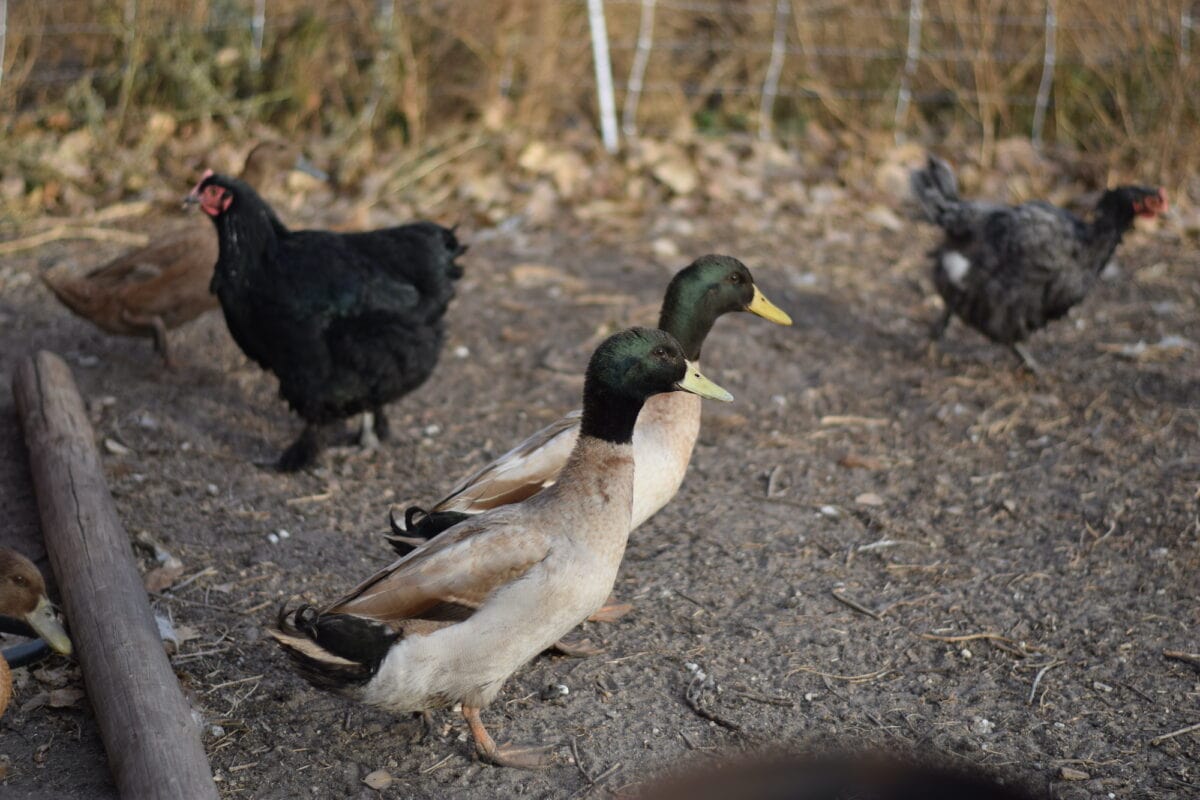
Socializing & Exercise:
- Flock Animals: Ducks are social and should be kept in groups. A minimum of three ducks is recommended.
- Free-Range: If possible, allow ducks to free-range in a safe area. This provides them with exercise and the opportunity to forage for insects, which is part of their natural diet.
- Enrichment: Ducks enjoy playing with water and exploring their environment. Providing a varied landscape with places to hide and explore will keep them happy.
Breeding & Raising Ducklings:
- Breeding: If you plan to breed ducks, provide a safe nesting area and ensure the drake (male duck) and ducks are well-fed and healthy.
- Ducklings: Ducklings need extra care, especially regarding temperature, water safety, and diet. They should be kept in a brooder with a heat source and fed a specialized diet until they are old enough to transition to adult feed.
→ For our hatching guide and raising ducklings, read this post on how to hatch duck eggs.
How to Care for Ducks Seasonally
Taking care of ducks in both summer and winter involves adjusting their environment, food, and water needs to ensure they remain healthy and comfortable throughout the year. Here’s how to care for your ducks during each season.
Summer Care for Ducks:
1. Heat Management:
- Shade: Provide ample shaded areas to protect ducks from direct sunlight. You can use tarps, shade cloths, or natural shade from trees.
- Cool Water: Ensure ducks always have access to cool, clean water. Ducks love to swim, and having a kiddie pool or shallow tub can help them cool off. Change the water frequently to keep it fresh.
- Water Misters: If it gets extremely hot, consider using water misters in the duck run to help lower the temperature.
2. Hydration:
- Fresh Water: Ducks need access to clean drinking water at all times. They drink more in hot weather, so check and refill their water containers often.
- Electrolytes: In extreme heat, adding electrolytes to their water can help prevent heat stress.
3. Ventilation:
- Coop Ventilation: Ensure their coop has good ventilation to prevent overheating. Open windows or vents, and consider using fans if necessary to circulate air.
4. Diet:
- Feeding: Continue with their regular feed but offer it during cooler parts of the day, like early morning or late evening, when they are more likely to eat.
- Treats: Provide cool treats like chilled watermelon, peas, or cucumbers to help them stay hydrated and cool.
5. Parasite Control:
- Flies and Mosquitoes: Warm weather can increase the presence of flies and mosquitoes, which can be bothersome. Keep their area clean and consider using fly traps or natural repellents.
- Bathing: Ducks should have access to water for bathing, which helps keep their feathers clean and free from parasites.
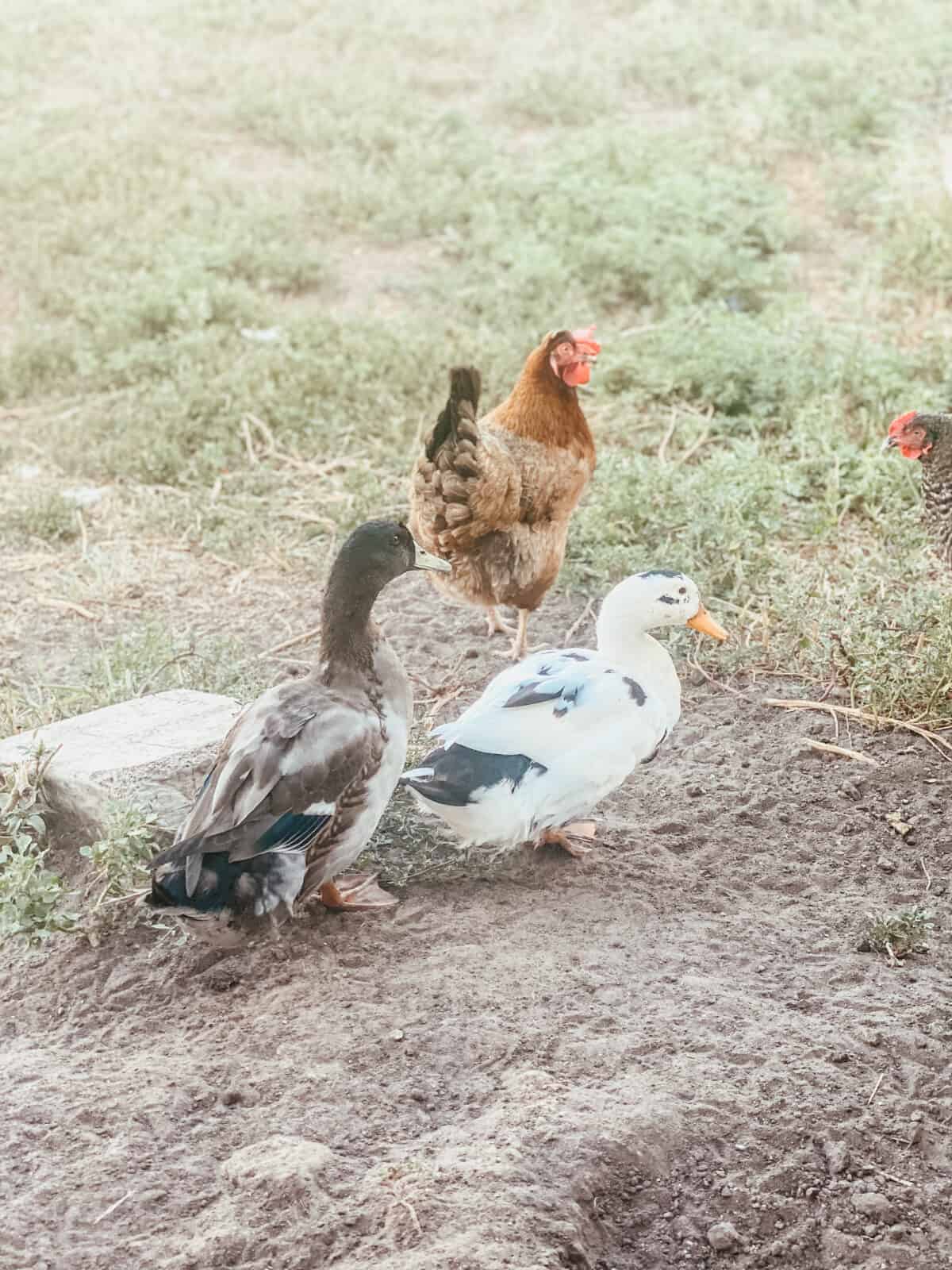
Winter Care for Ducks
1. Cold Management:
- Shelter: Provide a draft-free, insulated shelter that keeps ducks dry and protected from wind, rain, and snow. While ducks are cold-hardy, they still need protection from extreme cold.
- Bedding: Increase the amount of bedding in the coop, using straw or wood shavings, to help keep them warm. Deep litter bedding can generate some warmth as it decomposes.
- Windbreaks: Install windbreaks around the duck run to protect them from chilling winds.
2. Water Management:
- Preventing Freezing: Use heated water bowls or buckets to prevent their drinking water from freezing. Regularly check and refill water containers.
- Swimming Water: Ducks enjoy swimming year-round, but ensure their water doesn’t freeze over. If you provide a pool, it should be emptied or de-iced regularly.
3. Diet:
- Increased Calories: Ducks burn more calories to stay warm in the winter, so consider offering a diet higher in energy, such as cracked corn, especially before bedtime.
- Regular Feeding: Provide feed throughout the day, as they may need more food to maintain body heat. Ensure they have access to feed inside the coop if it’s too cold to venture outside.
4. Ventilation:
- Coop Ventilation: Even in winter, proper ventilation is crucial to prevent moisture buildup, which can lead to frostbite. Avoid sealing the coop too tightly, as ducks produce moisture from their breath and droppings.
5. Health Monitoring:
- Frostbite Prevention: Check their feet and bill for signs of frostbite, especially if temperatures drop extremely low. If needed, apply petroleum jelly to their feet to protect them.
- Regular Checks: Monitor your ducks regularly for any signs of illness or stress. Winter can be tough on older or weaker ducks, so they may need extra care.
→ We like to use this coop heater in the winter months when temperatures get a bit extreme. It’s incredibly safe to use and has auto shut off & can be wall mounted. Use Code: BHH5 for an additional 5% OFF of your order.

General Tips for Both Seasons:
- Predator Protection: Ensure that the coop and run are secure from predators year-round, as food sources become scarce in winter, and some predators may be more aggressive.
- Routine Care: Keep up with regular coop cleaning and maintenance in both seasons to prevent the buildup of bacteria, mold, or parasites.
By adapting your care practices to the season, you can ensure your ducks remain healthy, happy, and productive year-round.
How Often Do Ducks Lay Eggs?
Under ideal conditions, a healthy duck from a high-laying breed can be expected to lay eggs almost daily during her peak laying years, while others may lay less frequently.
Breed-Specific Laying Patterns:
- High-Laying Breeds: Some breeds, like the Khaki Campbell and Indian Runner, are prolific layers and can lay 250-340 eggs per year, which translates to about 4-6 eggs per week.
- Moderate-Laying Breeds: Breeds like the Pekin or Welsh Harlequin typically lay 150-200 eggs per year, or around 3-4 eggs per week.
- Ornamental Breeds: Breeds like the Call Duck or Muscovy might lay 60-120 eggs per year, or 1-2 eggs per week.
Age of the Duck
- Young Ducks: Ducks typically start laying eggs at around 5-7 months old, depending on the breed. Their laying will be most prolific in the first 2-3 years.
- Older Ducks: As ducks age, their egg production gradually decreases. By the time they are around 5-7 years old, they may lay significantly fewer eggs or stop altogether.
Environmental Factors:
- Light: Ducks need around 14-16 hours of daylight to maintain consistent egg production. During shorter days in winter, egg production may decrease unless supplemental lighting is provided.
- Diet: A balanced diet rich in protein and calcium is essential for consistent egg production. A decline in the quality of feed can lead to fewer eggs.
- Stress: Factors such as changes in environment, predators, or even moving ducks to a new location can cause stress and reduce egg-laying.
- Health: A healthy duck will lay more consistently. Illness, parasites, or poor living conditions can decrease egg production.
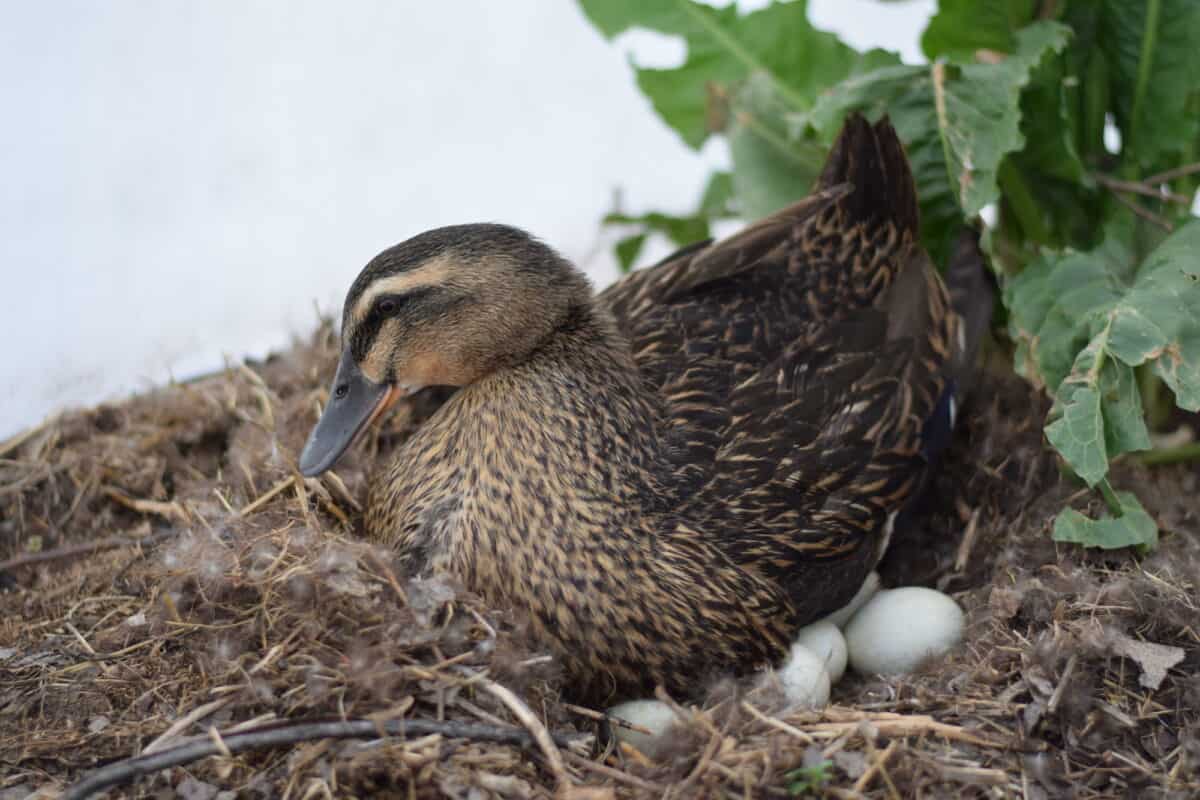
Seasonal Laying Patterns:
- Spring and Summer: Egg production is usually highest in spring and summer when there is plenty of daylight and the weather is favorable.
- Fall and Winter: Egg production typically declines in fall and winter due to shorter daylight hours, unless artificial lighting is used to extend the day (which is not something I advocate for). Generally speaking, we want to allow our flock to follow their seasonal needs.
Molting:
Ducks go through a molting period, usually once a year, where they shed and regrow their feathers. During this time, which can last several weeks to a few months, they may stop laying eggs altogether.
By following these guidelines, you’ll be well on your way to raising healthy and happy ducks!

